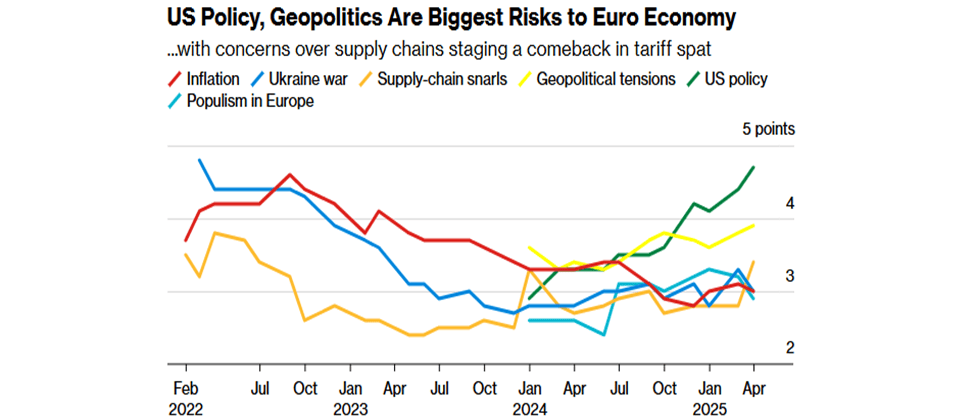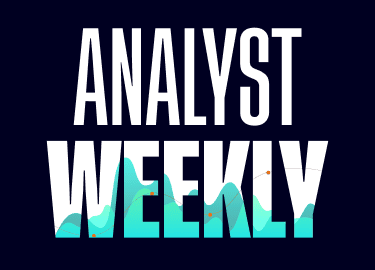If last week had a vibe, it was: markets in motion, nerves on edge. But buried under the noise were some real signals- especially for investors wondering where to park their cash (or not park it) right now.
Yields Are Loud Again
The bond market had a meltdown moment, again. 10- and 30-year yields shot up, with the UK’s long-term borrowing costs hitting levels not seen since the ’90s. US yields flirted with highs too as prices of bonds dipped, spooking rate-sensitive sectors. Why? Sticky inflation + global trade jitters = investors ditching long bonds for cash. Investor takeaway: If rates keep rising, high-yield savings and value stocks may outperform pricey tech which could feel the heat. A better risk-reward could be found in the near-term in shorter-duration bonds, dividend-paying stocks and companies with real cash flow, especially in defensive sectors like healthcare and defense.
Tariff Reshuffle
After four days of market churn, Trump reversed course on his April 2 tariff threats. It wasn’t a major rollback, but a strategic reshuffling: a new 10% universal tariff rate for most trading partners, while tariffs on China surged to as high as 145% (plus extras). Steel, autos, and many imports are still facing steep fees. A long list of companies, including Apple, Nvidia, and key consumer tech firms, received targeted exemptions, sparing smartphones, key chips, and some EV components from the tariff hammer.But other industries, like auto and gaming, weren’t so lucky. Jaguar Land Rover halted some US shipments, and console makers got zero mercy. Investor takeaway: It’s offically a trade war with China, and a protectionist shift globally. Companies with diversified supply chains and domestic production capacity are better positioned. Tariff risk is now fundamental, not a headline.
Currency Clues
China let the yuan slip to a 19-month low, a strategic move to soften the tariff blow. In the UK, gilts got hammered, but stocks bounced as rate cut hopes returned. The FTSE rallied hard as investors are betting the BoE might ease before the Fed does. Investor takeaway: FX matters again. A weaker yuan helps Chinese exporters, but hits multinationals earning in RMB. Meanwhile, if the UK does pivot dovish first, UK equities and income assets could get a fresh bid. Might be time to revisit your allocation across geographies.
Novartis Goes All-In on Made-in-America Meds
In response to looming pharma tariffs, Novartis pledged $23bil. over five years to manufacture all US-bound medications within the US. This is a big signal: multinationals are not waiting to see how the trade drama plays out, they’re adjusting fast. Investor takeaway: The “homegrown supply chain” theme is real. Keep an eye on US-based pharmaceutical manufacturers, factory builders, and logistics providers that stand to benefit from the reshoring boom.
Liquidity Drain = Stronger Dollar?
We’re entering a three-week liquidity squeeze: taxpayers are paying Uncle Sam, and the US Treasury is rebuilding its General Account. That’s a short-term drain on dollars in the system. Investor takeaway: This could fuel a stronger USD, which tends to weigh on emerging markets and commodities.
Between trade war and euro rally: ECB must remain flexible
The next rate cut is just around the corner: Markets expect the ECB to lower interest rates on Thursday, with a small adjustment of 25 basis points to 2.25% being forecast. Trump’s policies are currently the biggest risk for the eurozone – even more than geopolitical tensions and supply chain disruptions (see chart from Bloomberg). Trump’s approach threatens growth and complicates economic forecasting, posing increasing challenges for the ECB’s monetary policy.
Uncertainty is weighing on the economic outlook: Christine Lagarde’s press conference should be followed closely, as it has the potential to move markets. Due to the tense state of global trade, the ECB President will likely highlight the downside risks to European growth. Although U.S. tariffs of 20% on European goods have been suspended for 90 days, they could still negatively affect investment and consumer sentiment.
Conflicting effects: Trump is currently on an escalation course with China. Both sides are locked in a tariff battle. This is also fuelling concerns about a renewed rise in inflation in Europe, as tariffs are generally seen as inflationary. At the same time, tariffs weigh on economic growth, and oil prices have recently dropped sharply. This is exactly where the challenge for monetary policy lies, the ECB must remain flexible to respond appropriately.
Equity investors are hoping for a dovish signal: That could support European indices such as the DAX, CAC 40 and IBEX. However, such a message could also dampen or challenge the ongoing euro rally. Last week, the EUR/USD pair rose to 1.1358, its highest level in three years. Traders should also keep an eye on the dollar side. Expectations of a weaker U.S. dollar could make it harder for the euro to weaken significantly.
Bottom line: The ECB will aim to avoid adding to market volatility. In addition, Trump’s unpredictability makes it difficult for the ECB to communicate a clear path for future interest rate decisions. A cautious but dovish tone could help calm the market environment.

This communication is for information and education purposes only and should not be taken as investment advice, a personal recommendation, or an offer of, or solicitation to buy or sell, any financial instruments. This material has been prepared without taking into account any particular recipient’s investment objectives or financial situation and has not been prepared in accordance with the legal and regulatory requirements to promote independent research. Any references to past or future performance of a financial instrument, index or a packaged investment product are not, and should not be taken as, a reliable indicator of future results. eToro makes no representation and assumes no liability as to the accuracy or completeness of the content of this publication.



